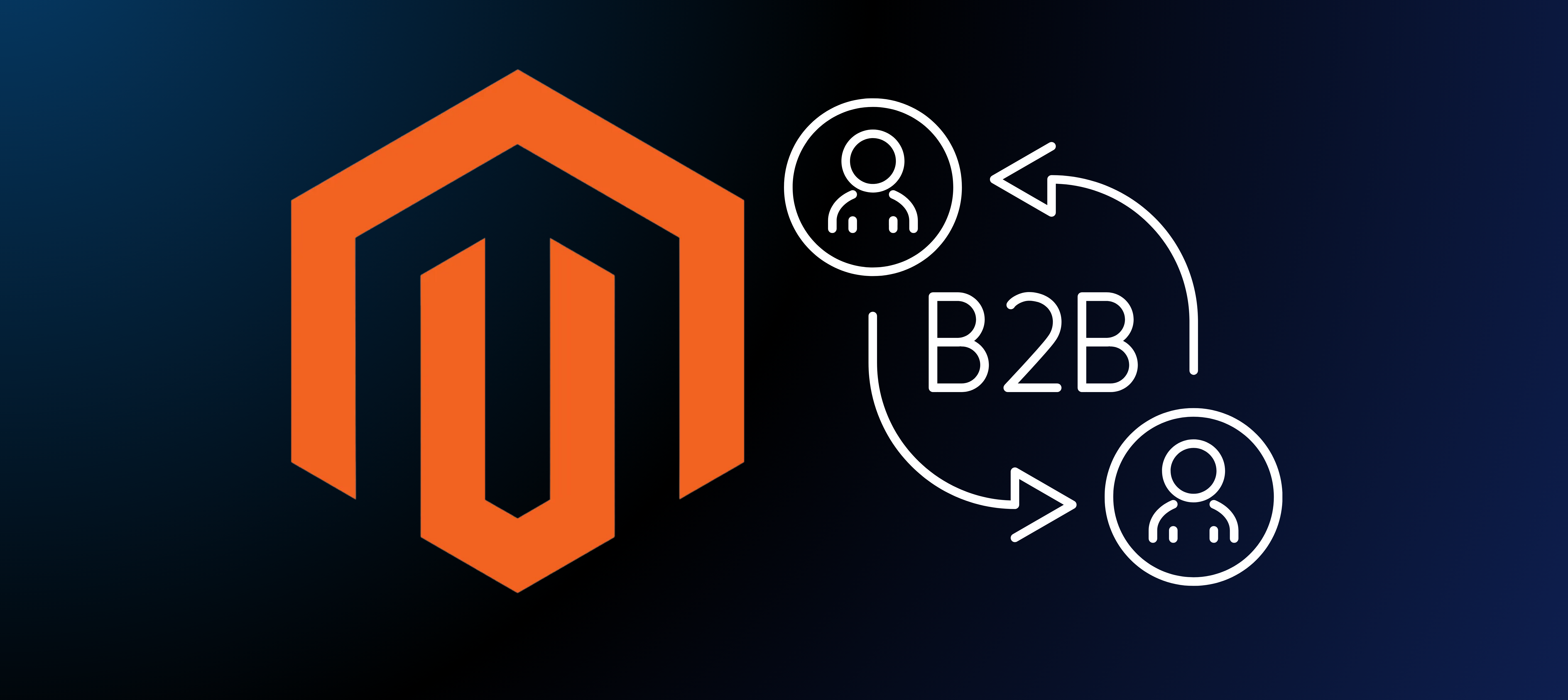Magento has been a leader in the e-commerce landscape for years, and that’s unlikely to change anytime soon. Every now and then however, it’s good to take a look at up-and-comers vying for a chance at the data-gilded throne, and see why they may be a competitive alternative. With Magento 1 reaching its end of life many webshop owners are on the lookout for new suitors rather than move to Magento 2, one of which has caught many an eye: Shopware 6.
Shopware isn’t exactly coming out of left field here. It powers some of the world’s most recognizable brands, like Phillips, Haribo, and M&M’s. In German speaking countries it’s a leading platform with a growing user base in Europe and elsewhere. Still, when comparing market share we are talking several orders of magnitude in size difference. So what’s the appeal of Shopware when compared to its bigger and bulkier cousin? Where does it pull ahead and where does it falter? If you’d like answers to these questions then read onwards to our play by play across a number of important e-commerce platform features.
Shopware 6 & Magento 2: New features and changes
Before diving in to individual aspects of both parties, here are some of the most significant new features and changes, good and bad, that have happened to both platforms moving to their respective new versions. Consider this a reminder or flash card to keep in mind while perusing the following sections.
|
Shopware 6 |
Magento 2 |
|
Symfony architecture. |
Rebuilt architecture with modern codebase (no leftover code from Magento 1.) |
|
Partially rewritten code now conforming to modern best practices. |
Upgrades to the feature set of Magento Enterprise. |
|
A large library of plugins and extensions (CMS, custom products and more.) |
Fully expandable codebase. |
|
An API to develop your own plugins. |
A constantly growing library of plugins. |
|
Core code contains vestigial elements that aren’t suited for development or expansion. |
Table: most significant new features and changes between Shopware 6 and Magento 2
Community vs enterprise editions
Shopware and Magento both offer community editions as a free point of entry to the ecosystem. In Shopware’s case the offering is clearly intended to be a starter kit to future growth. An integrated storefront and an easy-to-use drag-and-drop editor are included with the core cloud solution. More advanced features, like product customization, developer support, an extensive B2B suite, sales channels, and CMS functions are kept off the table for the professional and enterprise editions. The community edition also gives you access to a ‘freemium’ upgrade path, where you can pick and choose additional paid features as you grow.
Magento’s offering is similar in scope here, though more extensive due to the nature of the platform itself, as Magento takes the ‘everything but the kitchen sink’ approach in its platform. The community edition gives you access to most of the core features seen in the enterprise edition, with holdout features appealing to larger online retail stores. These include enhanced security, performance, analytics features and better merchandising through richer product information. You also have access to a drag-and-drop UI to update categories. Features themselves don’t tell the whole story, as there are other elements that you need to determine whether Magento’s more feature rich community edition is a net positive in all cases.
Shopware & Magento pricing
Cost can be a deciding factor for many developers when choosing their platform. This is also an area where there is a clear distinction between the two platforms. Magento offers an enterprise price starting at € 17,870 per year. Shopware on the other hand has a much lower price ceiling with a one time fee of € 2,495 for the professional edition and €5,995 for the professional+ edition. Shopware also offers an enterprise edition however no indication is given on their website. Let’s keep perspective here – shopware is clearly the cheaper alternative and especially for small to medium sized webshops that do not need the advanced end extensive feature set of Magento Enterprise it’s an option worth paying attention to.
Shopware vs Magento Community
Both platforms put in significant effort into curating and cultivating their communities. Magento counts more than 300,000 active members – quite an achievement and a great resource for developers and builders. In part thanks to this, you can find a vast library of user guides, blogs, and resources to answer any potential questions you may have.
Shopware in comparison, does not advertise the size of its community on its website, neither is a clear number readily available online. Despite this, the community does feature significantly in their marketing material and is therefore clearly a focus. While it is safe to assume that they can’t compete when it comes to numbers they do offer user friendly platforms like their own forum and Wiki.
Development friendliness
As a consequence of it being less complex with fewer plugins and features, Shopware is significantly more easy to set up and develop on your own. For small to medium businesses this can be a boon to cutting costs especially when starting up and operating on a shoestring budget. Magento is more complex and therefore more challenging. This is even reflected in the cost of hiring a developer for both platforms, with a Magento developer costing up to twice as much per hour.
In terms of the underlying technical foundations for developers, Shopware 6 has also been reforged to be more flexible. The approach has been to take all elements of a webshop and ensure functionality from an API first perspective. In other words, all elements of your Shopware 6 webstore can be managed via an API – leading to a much greater variety of e-commerce projects being achievable on the platform.
Magento has gone even further in its move to Magento 2, with a complete rebuild of all its code, in effect an entirely new Magento. This hasn’t done anything to reduce its complexity or the slightly higher skill-floor of its development ecosystem, and that’s fine. The approach that Magento has taken here is in keeping with its philosophy. Give developers all the tools, features, and possibilities they can handle and more. If that happens to be a bit challenging due to the plethora of options, well that’s what the community and vast resource libraries are for. An oversimplified if still workable example that can be drawn is the difference between Playmobil and Lego. One gives you far more parts than the other, and consequently takes much more time and effort to work with, but you can do much more with it.
Performance and security
Both platforms score well on security, though as with other aspects of Magento there is simply more flexibility and so more options one can take. Still no information currently available indicates any significant risks to developers when choosing one platform or the other. In fact this appears to be a non-issue when it comes to a choice between the two platforms.
The same can be said when it comes to performance: Both enable the merging of JS and CSS files with compression, both use Varnish caching, with shopware only being slightly slower due to its shopping worlds marketing toolset running after a page has loaded. Keep in mind we are talking about very small differences in time here, and in duration not directly relevant to e-commerce stores with even thousands of orders per day. When it comes to performance and security then one could argue it’s a coin toss, and for anyone choosing either of the two platforms it will be other features that justify a yes or a no.
User friendliness
As you may imagine, with greater complexity comes more challenging user friendliness. Shopware users can access a demo shop and collect sales and customer data as well as edit and change pages. You can often make changes directly without diving through more complex systems and menus. By contrast Magento’s admin panel, though equipped with far more features, can also be more difficult to navigate and despite being far better than Magento 1 still requires more extensive knowledge of web development. For the user-friendliness of this article we’ve also showcased some of the most important differences below;
|
Shopware 6 |
Magento 2 |
|
Has all the features you need to easily internationalize your site (translations, shipping etc.) It does however mis easy-to-use solutions for cross-border tax and tariffs. |
Built-in support for multiple currencies as well as taxes and tariffs for international shipping. |
|
Easily make custom products. |
Extensive tagging and itemization means you can categorize a vast product library efficiently. |
|
Ready-to-use marketing and promotion tools and templates. |
Completely customizable system for promotions with far more diversity. |
|
Drag-and-drop layout tools for quick and intuitive building. |
Layout is done using XML and so is less intuitive and easy to use. |
Table: most important differences between Shopware 6 and Magento 2
Hosting requirements
Generally as it pertains to hosting one could make the case that hosting Shopware is more simple whereas Magento is the more complex of the two with far more moving parts. Shopware can run MySQL and in addition Elasticsearch. While running on only MySQL is not preferred you still do have that option available to you. By contrast Magento, as of version 2.4, mandates the use of Elasticsearch. Shopware in turn requires APCu PHP while Magento does not. One additional benefit that Magento 2 has is that Varnish is built in, which means you can activate it without any external modules. Shopware offers integrated Varnish as an enterprise feature only.
Shopware vs Magento?
For anyone on the fence between the two platforms the most important question to ask yourself is what do you need? Like many situations where you have multiple products offering value on the market it’s less about what’s bad about one or the other than about a fitting price and the features you need. Magento is far more expensive – with this greater expense also comes a need for more development time and customization. Shopware on the other hand is cheaper and offers more simple and intuitive solutions. For large enterprise endeavours Magento seems, for now at least, the better option. This leaves those who can afford such a package far more leeway to develop and build their website. The increased development time is worth the full customizability.
If Magento enterprise is pushing your budget to the limit however, that extra time and effort may matter a lot more. Many can’t afford it at all and must then decide between a premium Shopware solution and the Magento community edition or vice versa. Operating on a starter budget? Then both community editions will likely be your options. Here again we have a tradeoff between cost of development, time, and cost of service. For every combination of these three variables you are likely to produce a different ‘best option.’ We come back to the parallel drawn previously. You’re building a store, you have specific needs, budget, and time. Do you pick Lego, or Playmobil?
Test it out yourself! At Hypernode we offer a free 14-day hosting trial period in which you can test your Shopware 6 or Magento 2 on a Hypernode installation. Make use of our pre-installs for a flying start. Sign up on our website.
Hi! My name is Dion, Account Manager at Hypernode
Want to know more about Hypernode's Managed E-commerce Hosting? Schedule your online meeting.
schedule one-on-one meeting +31 (0) 648362102





